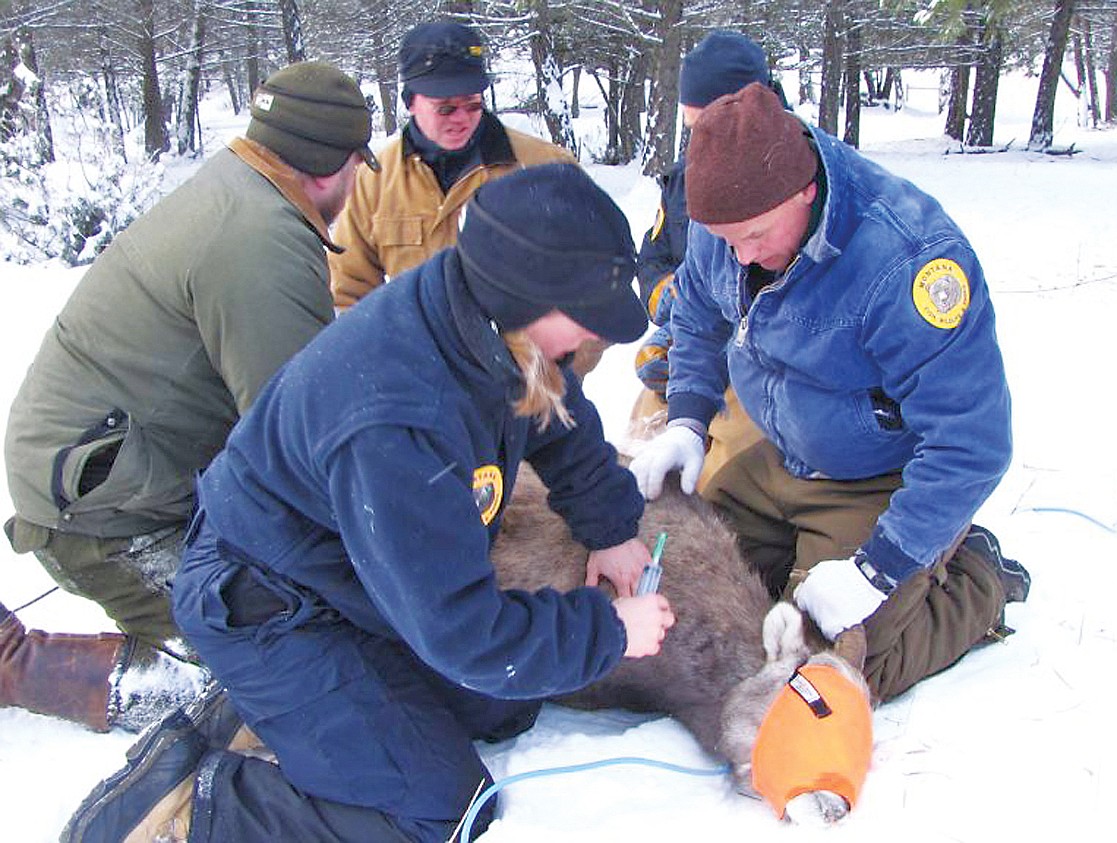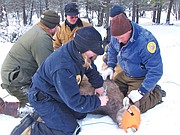Capture and health testing conducted on bighorn sheep herd
Fish, Wildlife & Park Biologists and volunteers from other agencies and the local community captured and released 32 bighorn sheep on the Woods Ranch Wildlife Management Area near Eureka, according to a press release issued last week.
These captured sheep were a mixture of ewes, lambs and rams, and the operation is designed to obtain health information on the population.
As part of the Galton Range herd that occupies land in the U.S. and Canada, the Canadians refer to this group of sheep as the “Kootenay Trench Herd”. These sheep are part of a native herd and believed to be similar genetically to the Ural Tweed population along Lake Koocanusa.
They were captured with a large drop net suspended from poles, having a net drop over them after being drawn to the site with hay. Biologists and volunteers then hobbled and blindfolded the individual sheep so they could be processed.
Ten sheep were captured and processed in the morning, 22 were processed in the afternoon, and two large rams, one weighing 285 pounds, were captured.
The sheep were tested for respiratory pathogens that can cause pneumonia such as Mycoplasma ovipneumoniae and various bacteria belonging to the Pasteurella group. Also included in the testing was exposure to respiratory viruses and parasite loads such as lungworm. Blood, nasal swabs and tonsil swabs were collected for testing and temperature was monitored. An ear tag was attached to each sheep.
The testing is important for monitoring the health of this unique herd of native bighorns. The health information is also important if the sheep are to be used for augmenting other sheep herds.
Additional bighorn sheep herd health operations will be focused on herds in Hunting Districts 121 (North Clark Fork), 122 (Clark Fork Cutoff), and 101 (Ural-Tweed along Lake Koocanusa (Libby Reservoir)). Bighorns in the Paradise herd (HD 124) were captured last month as part of a statewide research effort to learn more about how diseases function in bighorn sheep populations.




